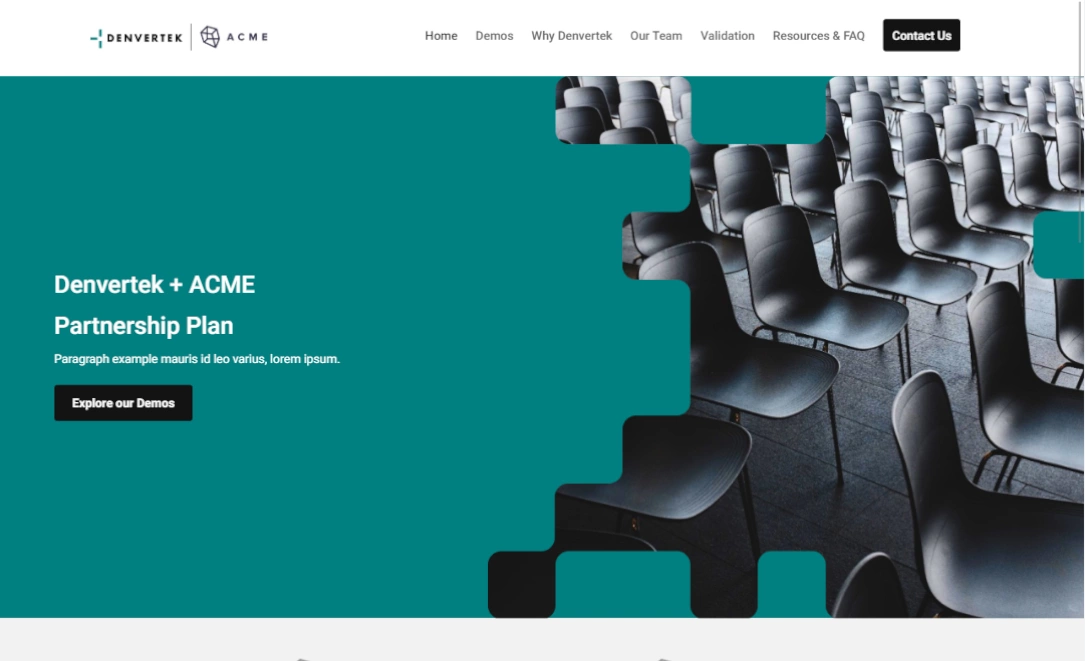Marketing and sales enablement are terms that get tossed out so often around each other, you’d be forgiven for assuming they were almost the same thing — but that’s not quite the case.
While marketing and sales enablement share a symbiotic relationship, they serve very different functions. This guide will help you understand the differences between marketing and sales enablement, get to grips with what ties them together, and see why a business needs to understand both to truly succeed.
Understanding the difference between marketing and sales enablement
When it comes to understanding sales enablement and marketing, the first step is to define them. Let’s put it simply to start:
- Sales enablement is a business strategy that encompasses various aspects that can help a sales team improve their performance including training, coaching, courses, and special events.
- Marketing is the act of selling or promoting a business’s goods or services and includes advertising and market research as well as creative teams.
You might be looking at those definitions and thinking, “If they’re that distinct, how do they get mingled up?” The answer is that both departments rely on the other and need to have an open line of communication for the company as a whole to truly be successful.
Now that we know what each team does, let’s break down how they work.
Department roles within the company
To further understand how sales enablement and marketing teams work, let’s take a look at the most important roles in each org.
Top 4 sales enablement roles
VP of Sales Enablement: The VP of sales enablement helps maintain a connection to the stakeholders at the very top. They work on overall strategy and ensure it’s aligned with the company’s vision.
Director of Sales Enablement: The director takes the overall strategy from the VP and translates it into actionable programs. They’re also in charge of managing cross-departmental relationships to help keep everyone on the same page.
Sales Enablement Manager: The manager is one of the most critical roles no matter the size of the company. They run the onboarding program for new hires and help remove bottlenecks so the rest of the team can thrive.
Sales Coach/Trainer: The sales coach or trainer provides training on a day-to-day basis. They’re working with reps to help them improve their skills, as well as preparing the learning materials, and helping evaluate training program effectiveness.
Top 4 marketing roles
Chief Marketing Officer: The chief marketing officer (CMO) is at the very top of the organization and oversees all brand and promotion strategies. They work most closely with the CEO and have the widest area of oversight.
Director of Marketing: Several levels below the CMO is the director of marketing, who develops and manages new projects and campaigns and meets with both account managers and creatives regularly.
Creative Director: The creative director determines the creative vision for the project at hand. That means everything from approving copy and designs to establishing budgets.
Copywriters & Designers: Technically two roles, copywriters and designers (or art directors) work together closely to execute the Creative Director’s vision. They’re the ones creating the ad the public will see.
Key responsibilities
The main goal of the sales enablement team is to boost performance and increase revenue for the company by helping improve reps’ efficiency. They’re the ones staying abreast of improvements in strategy and sharing that information with the rest of the sales team. They’re also keeping track of what strategies are working and which ones aren’t.
Meanwhile, marketing is focused on not just messaging but defining the brand itself. They’re creating content for the business website including custom content marketing on microsites. They’re also the ones in charge of managing the company’s social media presence and even internal communications.
How do they help each other?
In short, the marketing team can better perfect their messaging by learning what tactics are working for the sales team and who the buyers are. Similarly, sales enablement can study the content that’s bringing in conversions via marketing and use that information to adjust their training materials and better arm their reps. This is where you can truly see the symbiotic nature of the relationship. Both teams need each other.
Best practices for aligning marketing and sales enablement efforts
Co-create strategies, goals, and KPIs
Instead of creating strategies and KPIs in a silo, teams should work together to develop goals and be open with their lines of communication. If they don’t do this, they run the risk of coming up with goals that are antithetical to one another. Both teams have a better chance of success if they’re working toward the same thing, even if they’re using different methods to get there.
Create agile content to allow for increased personalization
Both the sales enablement program and the marketing team rely on customized content for success. It’s a great way to speak directly to their potential customers, which means they should be relying on agile content. That means content that can be edited quickly based on real-time analytics to better speak to target audiences. Microsites, like those created with Zoomforth, are a great example of how to achieve this.
By being able to pivot quickly based on a microsite’s performance, content can be honed and refined to suit the target audience. It also means that instead of relying on assumptions about a certain target, you can study their actual behavior by examining exactly who is coming to your site and what they’re doing.
Utilize ideal customer profiles
If your company hasn’t already set up ideal customer profiles, then now is the time. Ideal customer profiles (ICPs) are an in-depth portrait of the perfect customer, which could be an individual or another company. The best way to understand the term is by answering the question: who do you think of when you envision who your product or service is for?
If both departments build strategies off the same ICP, then it’s going to help their goals align. They’ll both be working towards reaching the same person, and that person will (hopefully) be the one most likely to convert. Focusing efforts here could ultimately help boost revenue!
Maximize your reach with custom microsites from Zoomforth
If you’re ready to increase the power of your content, then Zoomforth is here to help! As one of the top microsite creators and hosting solutions, we offer the perfect way to get your agile content off the ground. Every Zoomforth site has real-time analytics, which means you’ll have tons of data to study and you can pivot and optimize content in a snap.
Not only that, but Zoomforth makes it easy to keep all of your pages on brand and there’s no limit to how many pages you can create! So you’ll never have to worry about running out of space. Don’t wait — request a demo today.



